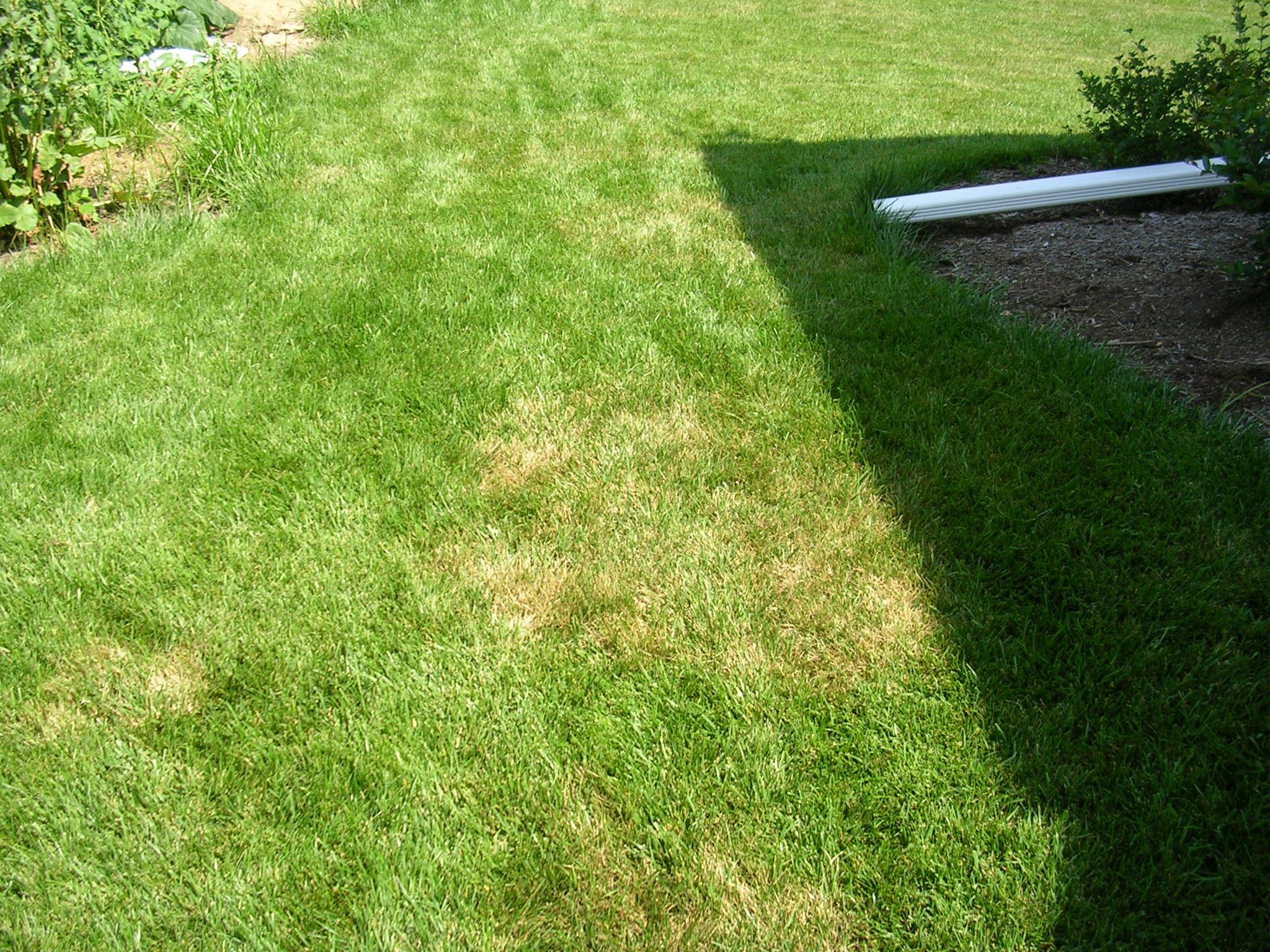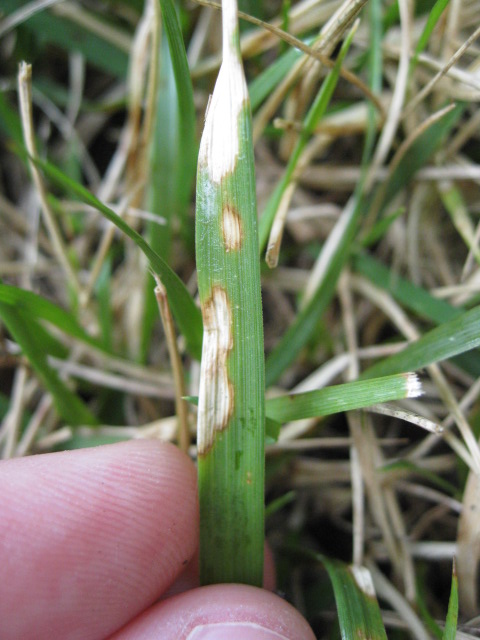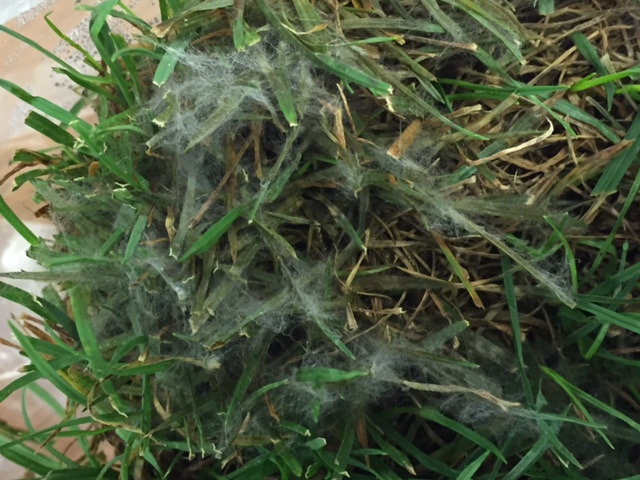(Megan Kennelly, KSU Plant Pathology)
Is this brown patch in a tall fescue home lawn? Look for lesions to be sure! See below!
It’s that time of year when you go outside in the morning and immediately start to sweat. Ugh.
High humidity means that the temperatures stays high even overnight. Sticky, humid nights = conditions ripe for brown patch and foliar Pythium.
Brown patch is common in tall fescue lawns, perennial ryegrass athletic fields and fairways, and bentgrass putting greens. I’ve been hearing reports of brown patch popping up in the past few days.
Foliar Pythium is common in bentgrass and rye fairways, and we occasionally see it in lawns that are very lush and wet. Foliar Pythium is very rare on greens. I haven’t seen any yet, but with humidity and nighttime lows in the 70s it’s a possibility.
Fungicides and cultural practices for both diseases are spelled out in detail in the publication Chemical Control of Turfgrass Diseases.
In tall fescue, brown patch symptoms can resemble drought or other injury. If in doubt, check around for the characteristic lesions:
Both diseases can produce mycelium in the turf during wet, humid, dewy mornings. With Pythium, usually the turf looks matted down and greasy.
Brown patch:
Pythium – grass is matted down and greasy/mushy:
Not sure? You can always send a sample to the KSU Plant Diagnostic Lab.







